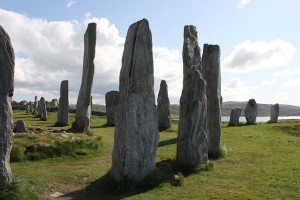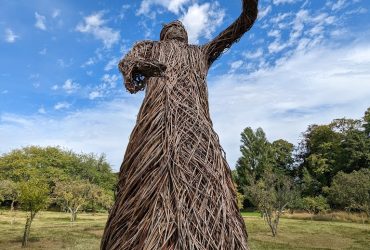 Although my life is pretty consistently filled with theatre, it doesn’t have what one might call a normal flow. Last week was Ipswich seeing Last Five Years, London seeing a computer generated musical and a new drama at the Arts, teaching, quick flight to Glasgow to sleep over, then Stornaway for Gaelic theatre, and back to London. In between these travels were coaching sessions ranging from a new web-based drama serial, a season of new writing with emerging directors, a quick open space on showing work, some wonderful pitches for new international projects from new producers, explorations on regional arts centres, and wondering about joint honours plumbing and acting.
Although my life is pretty consistently filled with theatre, it doesn’t have what one might call a normal flow. Last week was Ipswich seeing Last Five Years, London seeing a computer generated musical and a new drama at the Arts, teaching, quick flight to Glasgow to sleep over, then Stornaway for Gaelic theatre, and back to London. In between these travels were coaching sessions ranging from a new web-based drama serial, a season of new writing with emerging directors, a quick open space on showing work, some wonderful pitches for new international projects from new producers, explorations on regional arts centres, and wondering about joint honours plumbing and acting.
But the two highlights of my week both involved architectural gems. One 4,000 years since construction and the other building just 11 years old – a few miles apart, an hour from Glasgow by air, on the Isle of Lewis.
I was there to join Kath Burlinson and support her as she directed a showing of a new Gaelic play “Hallaig” by Iain Fionnlagh Macleoid for an invited local audience and visitors from the National Theatre of Scotland and other esteemed arts establishments. The cast were Martin Macintyre as Somhairle chanelling the life and poetry of the poet Sorley Maclean; Donna Morrison as Eimhir; and David Walker as the eternal warrior, common man, Peron. It intertwined a fictional narrative with the poetry of the great Sorley. It played with time, and life, and death, and boatbuilding as the language of the islands flowed. It looked great, sounded great, and was very well received by the chat in the bar afterwards.
We were based at An Lanntair (the Lantern) theatre in Stornaway designed by Dundee based architects Nicholl Russell. A stunning new building which seemed to be created with everything that is best in a theatre and community space. The foyers had great views across the harbour. There were quiet spaces and busy spaces, art spaces and white walled gallery spaces. There was a well stocked bookshop, a good bar and very tasty restaurant menu, and a welcoming staff. At its heart is a good 200 seat theatre with mid-scale stage, but with a difference. I’ve only ever seen it in one other theatre I’ve worked, in Tallin Estonia. Here the back wall of the theatre lifts up to the gods, to bring together the experience of being in the bar with the experience of being in the hall. What better way to flow from bar to theatre than for a ceilidh.
I can’t wait to go back, and I will tell everyone to have a look at it and talk with the incredibly helpful & supportive technical manager Mike Adkins. See how you could make a site responsive piece of theatre using this amazing building, or just take a show/workshop there. I love the surprise of a new theatre. Thank you to CEO Elly Fletcher and all her team for making me feel so welcome.
Yesterday morning Kath and I, with our newly met Colorado based design and gaelic theatre specialist/student Catherine Cunningham, went out to one of the greatest ancient pieces of living theatre on the planet – the stones of Callanish to the west of Stornaway. They are breathtaking in their dancing lightness, in contrast to the weight and gravity of Stonehenge. We were blessed with spring sunlight and stillness, and we were the only people there on this quiet Sunday morning.
As we explored the stones, and wondered at their purpose then and their magic now, we realised an extraordinary acoustic property. Over 100 metres along the path of the long line of stones, we could hear a quiet whisper from someone in the circle. Indeed even stranger if the person leaning against the last stone spoke quietly, we could hear them 100m away in the circle. So it worked both ways. The sound travel and the acoustic reinforcement made no sense to us. And I can’t, at the moment, find anything on the web to tell me what, how, why. I suspect we are not the first people in 4,000 years to have uncovered this mystery.
What theatre of life and death played out in these stone circles in pre-arts council days I don’t know. The acoustic within the circle was rich and resonating, which was itself odd given no walls and no roof. I suspect architects of the skill of Nicholl Russell, and the great specialist Derek Sugden founder of Arup Acoustics who died last month after a lifetime of exploration, would have many answers.
As an aside, It was a pleasure to have met Derek when he was working on Buxton Opera House. His perfectly designed sound balance will be heard for many lifetimes still, through his buildings.
The power of the unamplified human voice, the beauty of the languages of Gaelic and English, the skill of transmission to us as an audience whether holding a pint in the bar, seated in the theatre, or wrapped up on an ancient hillside. It is all amazing, and I am so lucky to be able to be part of this world.
Now back to some coaching clients and an Arts Council application.

